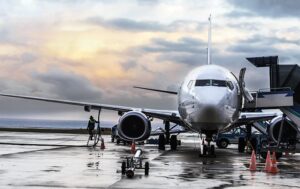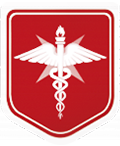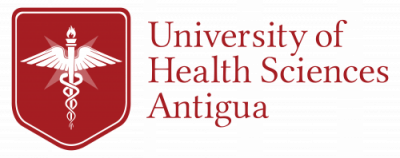ADVENTURE + MEDICINE = AEROSPACE MEDICINE

Aerospace medicine focuses on the clinical care, research, and operational support of the health, safety, and performance of crewmembers and passengers of air and space vehicles, together with the support personnel who assist operation of such vehicles. This population often works and lives in remote, isolated, extreme, or enclosed environments under conditions of physical and psychological stress. Practitioners strive for an optimal human-machine match in occupational settings rich with environmental hazards and engineering countermeasures.
Aerospace medicine concerns the determination and maintenance of the health, safety, and performance of persons involved in air and space travel. The environments of space and aviation provide significant challenges, such as microgravity, radiation exposure, G-forces, emergency ejection injuries, and hypoxic conditions, for those embarking in their exploration. Neither primary care nor surgical specialties address these issues with the depth needed to manage the health care of military and civilian aviators and space explorers. Aerospace physicians are trained in the physiological implications of exposure to these environments and appropriate medical management to ensure safe skies for all.
WHERE DO AEROSPACE PHYSICIANS WORK?
Aerospace Medicine physicians can be found around the world. Since the discipline, by definition, finds its home within agencies and clinics that concern themselves with medical and safety issues related to transportation, aviation, and space travel, physicians completing training in this field do not generally practice in traditional hospital settings. They are employed in the military, commercial airline companies, regulatory agencies, space agencies, and the independent clinics for medical flight certification, or in academia.
DIVERSE OPPORTUNITIES
The operational role of these physicians can be quite diverse. In the military, both active duty and reserves, their contributions range from medical support to a particular flight squadron and their families to evaluating military medical facilities.
The civilian aerospace medicine physicians are usually employed by commercial airline medical offices, in private practice offices with aviator medical certification/review officer privileges, with regulatory agencies, in general aviator education, in accident investigation research, or with space centers for spaceflight crew medical support and related research.
Thus, their daily responsibilities can range dependent on their employment site as well, from establishing certification protocols for aviators afflicted with challenging medical conditions to providing medical ground support to a member of a spaceflight crew experiencing illness in space or effects of microgravity.
RESIDENCY TRAINING IN AEROSPACE MEDICINE
There are currently five accredited U.S. residency programs for aerospace medicine. The military programs include the Air Force program at Wright-Patterson AFB, OH, and the combined Army/Navy program in Pensacola, FL. The civilian programs are at Wright State University in Dayton, OH, the University of Texas-Medical Branch in Galveston, TX, and the Mayo Clinic in Rochester, MN. They all require completion of a MD or DO program and an internship year involving direct patient care for enrollment. Beyond this year, the programs diverge to prepare their residents for the challenges of aerospace medical support within their respective branches of military service or within civilian aerospace institutions. There are also a number of training programs in other countries in civil and military institutions.
Recent changes by the American Board of Preventive Medicine have resulted in some program changes. For instance, clinical experience requirements have been increased for aerospace medicine program and the requirement for a separate “academic year” to complete a master’s level degree has been dropped. The military programs plan to continue with a year of training focused on obtaining a Master’s degree in Public Health or its equivalent. The civilian programs vary in their approach, integrating the required academic training within unique curricular designs.
The US military programs formerly consisted of 1 academic year and 1 practicum year after PGY-1. The Air Force program will continue to offer a separate academic year obtaining an MPH (or equivalent Master’s degree) followed by a two-year practicum with the requisite clinical time in each of the two years. The first year is dedicated to the fulfillment of requirements for a Master’s degree in public health at an accredited school of public health.
Civilian residents at the Wright State University program complete a Master’s program in aerospace studies with a Master’s research project requirement. Training within the military programs is geared to prepare residents for the care of flight squadrons and their families, as well as crew at sea or remote locations. Thus, it can include a variety of generalist clinical activities to prepare them for the breadth of medical problems associated with the flying environment. The clinical experience for the Wright State and UTMB civilian aerospace residents largely involves the rotations geared to support commercial airline medical departments, related government agencies, and especially NASA centers.
The Mayo Aerospace Medicine Fellowship is a two year ACGME accredited program designed to train academic aerospace medicine specialists who will be leaders, master clinicians, educators, and researchers advancing the field of aeromedical science and aerospace safety while expertly serving the aerospace population clinically. During this program, fellows will receive specialty training in the diagnosis, prevention and treatment of disorders associated with aerospace environments and with the adaptive systems designed to enhance performance and support life under such conditions. Also during the program, fellows will complete a Master’s degree in Public Health through the University of Minnesota. The curriculum includes clinical rotations at Mayo Clinic as well as outside training experiences at multiple sites including the USAF School of Aerospace Medicine, the FAA Civil Aerospace Medical Institute, and NASA. Additionally, fellows will receive flight training through the University of North Dakota School of Aerospace Sciences followed by recurrent flying experiences in fixed and rotary wing aircraft locally. All travel, tuition, and fees are paid by the fellowship. Applicants must have completed an ABMS approved clinical residency and be able to obtain a Minnesota state medical license. The program also includes hyperbaric and space medicine training. Multiple research opportunities are available and encouraged.
Many aerospace physicians choose to train in more than one area of medicine, such as internal medicine, family practice, emergency medicine, ophthalmology, and otolaryngology, because this approach can provide a broader perspective in addressing the challenges of medicine in this special environment.
The Air Force no longer offers separate residency years within the residency in Aerospace Medicine for Occupational and Preventive Medicine. However, the Air Force does offer a combined program in Family Practice and Aerospace Medicine. It should also be noted that the Air Force requires applicants to have completed at least 2 years as an Air Force flight surgeon as prerequisite to applying to the Residency in Aerospace Medicine. Although the Air Force no longer offers the additional third year in either Occupational Medicine or General Preventive Medicine, it will provide enough training in the 2-year practicum to allow graduates to challenge either the GPM or OM board exam if they wish.
BOARD CERTIFICATION IN AEROSPACE MEDICINE
Specialty board certification for physicians in Aerospace Medicine is provided by the American Board of Preventive Medicine, Inc., after completion of an approved 2-year residency and passing the Board examination.
READY TO TAKE YOUR MEDICAL CAREER TO “INFINITY AND BEYOND?”
We know what it takes to be a doctor. We are the second oldest private medical university in the Caribbean, producing physicians for the world since 1982. If you have always dreamed of being a physician, helping those in need, and earning the respect of your community, then UHSA is right for you.
ACCELERATED PREMEDICAL PROGRAM
If you are a high school graduate, or a university graduate who lacks the premedical pre-requisite courses, why not join our premedical program? It will give you all the credits you need to be promoted to our world-class MD program.
If you are a university graduate who has the premedical pre-requisites, then look at direct entry into our MD program, where you will learn to be not only a physician, but a healthcare leader.
EARN YOUR MD AND MASTERS OF PUBLIC HEALTH (MPH)
If you want to work in in global health, or just want to expand your understanding of the role of public health and prevention while also enhancing your career prospects, then our joint MD/MPH program is right for you.
We would love to have you join the UHSA family! Please contact our Admissions Team to learn more about living your dream with UHSA family.

